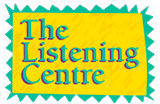Learning a new language requires the ability of the auditory system to attune to the sounds of the new language (phonemes) and new combinations of these phonemes at a rapid pace. There is a window of opportunity for language acquisition in the early phases of childhood when the brain is still “open” to the perception of all the surrounding sounds and is still highly plastic. This is why bilingualism comes easily and spontaneously to children exposed to two languages in their early developing years. Following this period of high malleability, the brain becomes “wired” to the fine perception of the phonemes of the language(s) it is exposed to the most at the exclusion of others. This is partly why learning a new language for an adult requires intense work and a lot of exposure and practice as provided by full time language training. This approach works well when the auditory processing mechanism is in good working order.
For adults with a past history of a language-related learning disability in the early grades, there is a good probability of a weakness of the auditory system which interferes with their learning process. In other words, these students never fully benefited from the window of opportunity for language acquisition, not even in their mother tongue. Many are affected for the rest of their life but a certain number of them use their ‘smarts’ and motivation to find strategies to compensate for these difficulties by using the context as a means for filling their perceptual gap. In other words, they use their cognitive ability to cover up for a sensory-perceptual type of deficit. This is why some students do better in later grades (high school and college) than in earlier grades. They have a content/context-oriented learning style.
When these individuals reach adulthood, the acquisition of a second language is like going back to the earlier school grades where the context is not yet of sufficient support to learn the building blocks of the new language. New phonemes in rapid succession have to be processed before anything can make sense and give the context of what is going on. Anyone who has learned a second language as an adult knows by experience that the social gathering where everyone talks about everything is a much more difficult situation than even a sophisticated conversation on one specific topic. In other words, learning a new language is like being learning disabled all over again.
At The Listening Centre we help improve auditory-language based learning disabilities by exercising the listening function. This strategy is also used with adults who need to learn a second language. The language integration process is further facilitated when the training is designed with an emphasis on the specific frequency range used by, for example, French speaking people.
The listening training that we use at The Listening Centre is based on the idea that listening is the ability to attune our ear to the sound information we want to receive and leave out the sound information that is not relevant (background noise in particular). The techniques of the training were originally developed by Dr. Alfred Tomatis, a French physician/ENT specialist who described the functioning of the ear as being very much like that of the eyes with the middle ear muscles acting like the ocular muscles of the eyes involved in tracking and focusing. And, as with the eyes, this attuning of the ears can be exercised. When the ear has the ability to “focus”, or “attune” with more precision, auditory processing speed and clarity improves, and the acquisition of language is facilitated.
 Skip Navigation
Skip Navigation